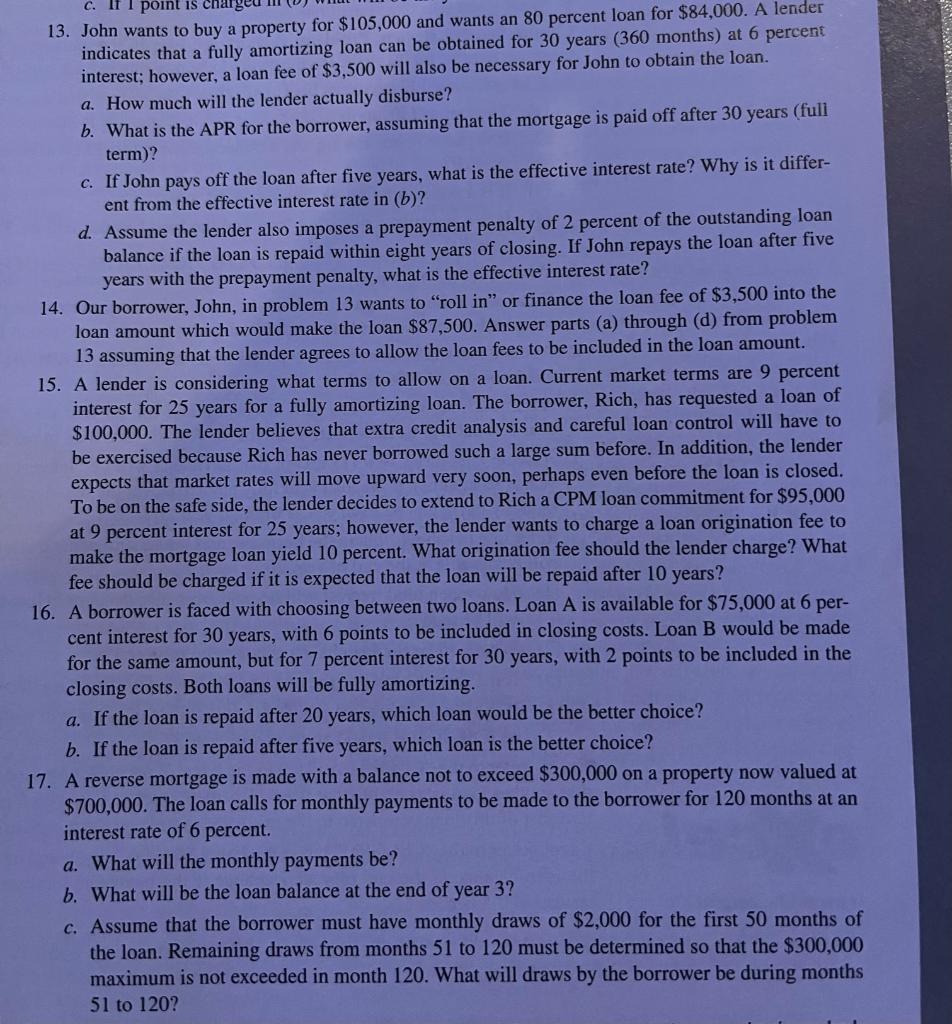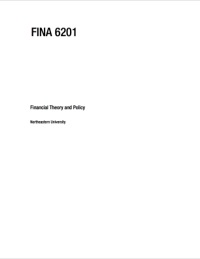
13. John wants to buy a property for $105,000 and wants an 80 percent loan for $84,000. A lender indicates that a fully amortizing loan can be obtained for 30 years ( 360 months) at 6 percent interest; however, a loan fee of $3,500 will also be necessary for John to obtain the loan. a. How much will the lender actually disburse? b. What is the APR for the borrower, assuming that the mortgage is paid off after 30 years (full term)? c. If John pays off the loan after five years, what is the effective interest rate? Why is it different from the effective interest rate in (b) ? d. Assume the lender also imposes a prepayment penalty of 2 percent of the outstanding loan balance if the loan is repaid within eight years of closing. If John repays the loan after five years with the prepayment penalty, what is the effective interest rate? 14. Our borrower, John, in problem 13 wants to "roll in" or finance the loan fee of $3,500 into the loan amount which would make the loan $87,500. Answer parts (a) through (d) from problem 13 assuming that the lender agrees to allow the loan fees to be included in the loan amount. 15. A lender is considering what terms to allow on a loan. Current market terms are 9 percent interest for 25 years for a fully amortizing loan. The borrower, Rich, has requested a loan of $100,000. The lender believes that extra credit analysis and careful loan control will have to be exercised because Rich has never borrowed such a large sum before. In addition, the lender expects that market rates will move upward very soon, perhaps even before the loan is closed. To be on the safe side, the lender decides to extend to Rich a CPM loan commitment for $95,000 at 9 percent interest for 25 years; however, the lender wants to charge a loan origination fee to make the mortgage loan yield 10 percent. What origination fee should the lender charge? What fee should be charged if it is expected that the loan will be repaid after 10 years? 16. A borrower is faced with choosing between two loans. Loan A is available for $75,000 at 6 percent interest for 30 years, with 6 points to be included in closing costs. Loan B would be made for the same amount, but for 7 percent interest for 30 years, with 2 points to be included in the closing costs. Both loans will be fully amortizing. a. If the loan is repaid after 20 years, which loan would be the better choice? b. If the loan is repaid after five years, which loan is the better choice? 17. A reverse mortgage is made with a balance not to exceed $300,000 on a property now valued at $700,000. The loan calls for monthly payments to be made to the borrower for 120 months at an interest rate of 6 percent. a. What will the monthly payments be? b. What will be the loan balance at the end of year 3 ? c. Assume that the borrower must have monthly draws of $2,000 for the first 50 months of the loan. Remaining draws from months 51 to 120 must be determined so that the $300,000 maximum is not exceeded in month 120 . What will draws by the borrower be during months 51 to 120







